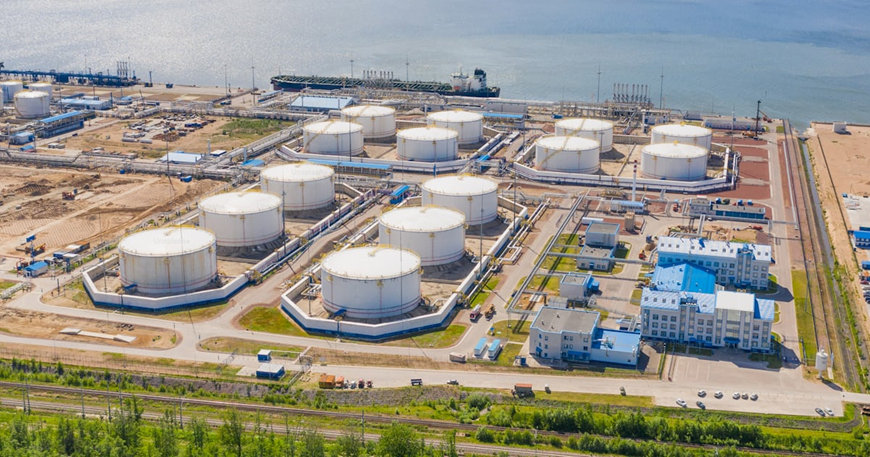Maximizing Efficiency: Strategies to Prevent Build Up of Tanks in Tank Terminal Storage
Image Source: Unsplash
## Introduction to tank terminal storage and the issue of tank build-up
Tank terminal storage plays a crucial role in various industries, such as oil and gas, chemicals, and agriculture. These facilities provide a safe and efficient way to store large quantities of liquids before they are transported to their intended destinations. However, one common problem that tank terminals face is the build-up of tanks. This build-up occurs when residues and sediments accumulate over time, leading to decreased storage capacity and operational inefficiencies. In this article, I will discuss the causes of tank build-up, its impact on tank terminal operations, and strategies to prevent it.
Understanding the causes of tank build-up
Tank build-up can be attributed to several factors. One of the main causes is the presence of sediments and residues in the liquids being stored. These particles settle at the bottom of the tanks and gradually accumulate over time, reducing the available storage capacity. Another factor is inadequate tank cleaning and maintenance procedures. If tanks are not cleaned regularly or if the cleaning process is not thorough enough, residues can build up faster. Additionally, poor monitoring and inspection systems can contribute to the problem. Without proper monitoring, it becomes difficult to identify and address build-up issues in a timely manner.
The impact of tank build-up on tank terminal operations
Tank build-up can have significant implications for tank terminal operations. Firstly, it reduces the overall storage capacity of the facility. As more tanks become filled with sediments and residues, less space is available for storing liquids, limiting the ability to meet customer demands. This can lead to delays in shipments and potential loss of business. Secondly, build-up can create operational inefficiencies. Tanks with excessive build-up may require longer cleaning and maintenance procedures, resulting in increased downtime and reduced productivity. Moreover, build-up can pose safety risks, as it may lead to contamination or corrosion of tanks, compromising the integrity of the stored liquids.
Strategies for preventing tank build-up
Preventing tank build-up requires a proactive approach and the implementation of various strategies. Here are some effective measures that tank terminals can adopt:
Regular tank cleaning and maintenance procedures
Regular cleaning and maintenance of tanks are crucial to prevent build-up. This includes thorough cleaning of tank interiors, removal of sediments and residues, and inspection of tank surfaces for any signs of corrosion or damage. By establishing a routine cleaning schedule and adhering to strict maintenance protocols, tank terminals can minimize the risk of build-up and maintain optimal storage capacity.
Implementing effective monitoring and inspection systems
To identify build-up issues early on, tank terminals should invest in advanced monitoring and inspection systems. These systems can include sensors that detect sediment levels, temperature, and pressure inside the tanks. By continuously monitoring these parameters, operators can take proactive measures to prevent build-up, such as adjusting storage conditions or initiating cleaning procedures when necessary.
Utilizing advanced technology for tank management
Advancements in technology have revolutionized tank management practices. Tank terminals can leverage technologies such as automated cleaning systems, robotic inspections, and remote monitoring capabilities. These technologies not only enhance the efficiency and accuracy of tank maintenance but also enable real-time data analysis, allowing operators to make data-driven decisions to prevent build-up.
Training and educating tank terminal staff on prevention techniques
Investing in staff training and education is vital for preventing tank build-up. Tank terminal operators should provide comprehensive training programs that cover proper cleaning techniques, maintenance procedures, and the use of monitoring systems. By equipping employees with the necessary knowledge and skills, tank terminals can ensure that prevention techniques are implemented consistently and effectively.
Case studies of successful prevention strategies
Several tank terminals have successfully implemented prevention strategies to minimize tank build-up. One notable case is the implementation of an automated tank cleaning system at a major oil storage facility. By utilizing robotic cleaning technology, the facility was able to clean tanks more efficiently and thoroughly, reducing the build-up of sediments and residues. Another case study involves the implementation of a real-time monitoring system at a chemical storage terminal. The system continuously monitored sediment levels and alerted operators when build-up was detected, enabling timely cleaning and preventing storage capacity constraints.
Conclusion: The importance of proactive measures in preventing tank build-up
Tank build-up can significantly impact the efficiency and operations of tank terminal storage facilities. To maximize efficiency and prevent build-up, tank terminals must adopt proactive measures such as regular cleaning and maintenance, effective monitoring systems, advanced technology, and staff training. By implementing these strategies, tank terminals can minimize build-up, maintain optimal storage capacity, and ensure smooth operations. It is crucial for tank terminal operators to prioritize prevention techniques and invest in the necessary resources to prevent build-up and maximize efficiency in tank terminal storage.
Subscribe to our blog for more insightful articles on tank terminal storage and industry best practices.



